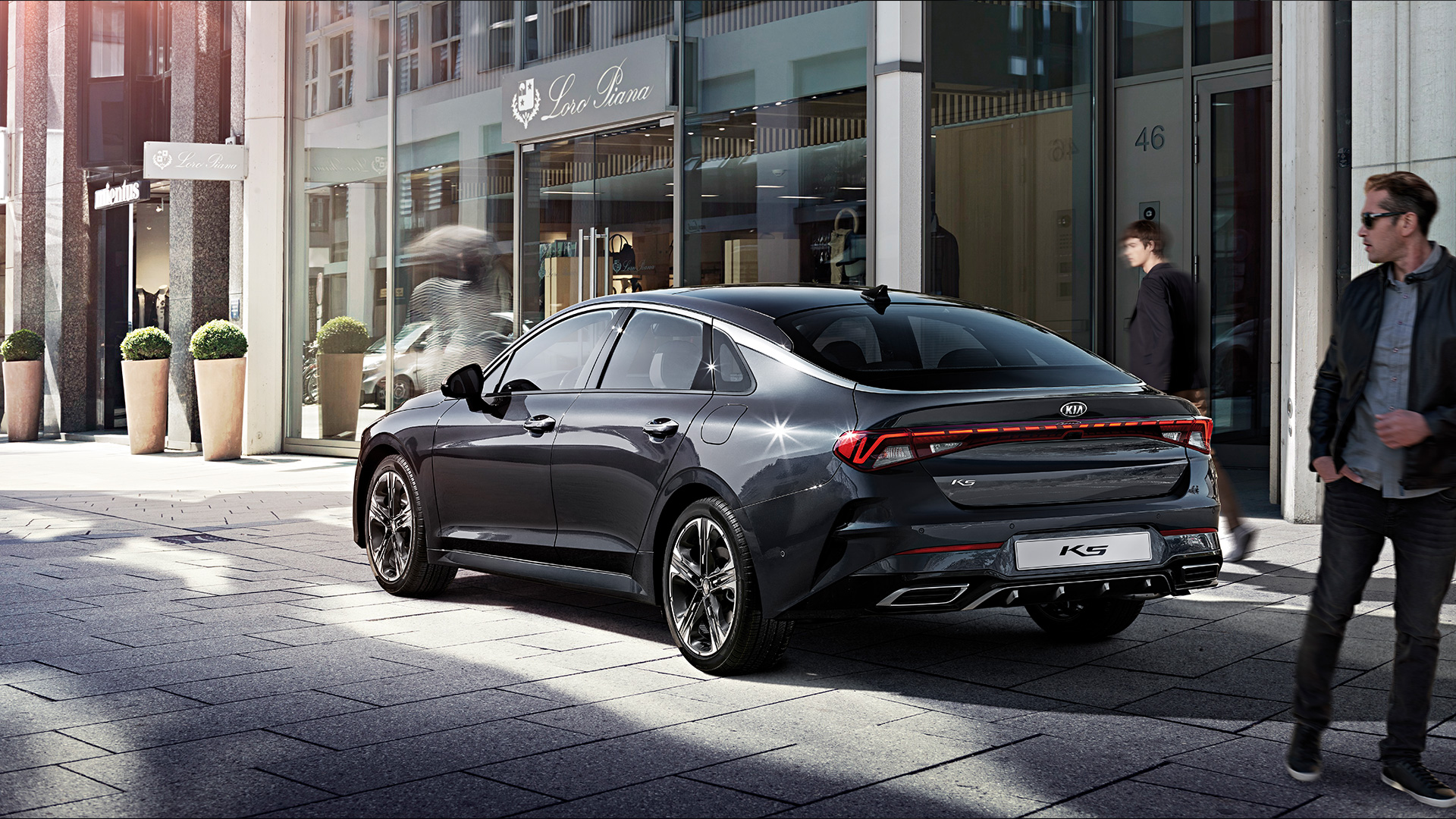
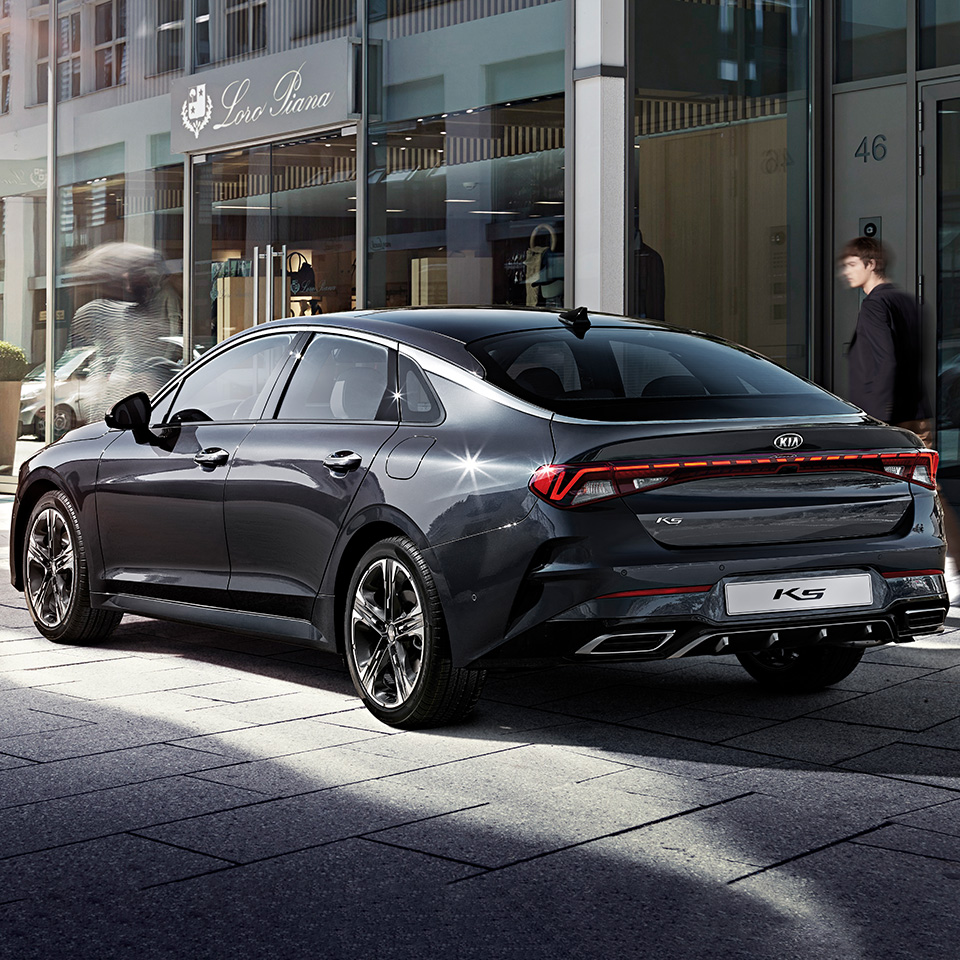


Cars are becoming smarter and smarter. They are increasingly built to understand the various orders of the drivers and transport them to the destination in a more convenient and optimized manner. The K5, too, is leading this trend. The crux of this evolution is the so-called ‘connected car’ technology, which incorporates information about various driving/vehicle conditions to control the car in the best interest and intention of the driver.
The 3rd-gen K5 offers remarkably interactive convenience features that one would not expect for a mid-size sedan. From the themed cluster design that changes graphics to match the weather and time to the voice recognition software capable of natural language processing, we explore in this article the various cutting-edge interactive convenience features applied to the new K5.
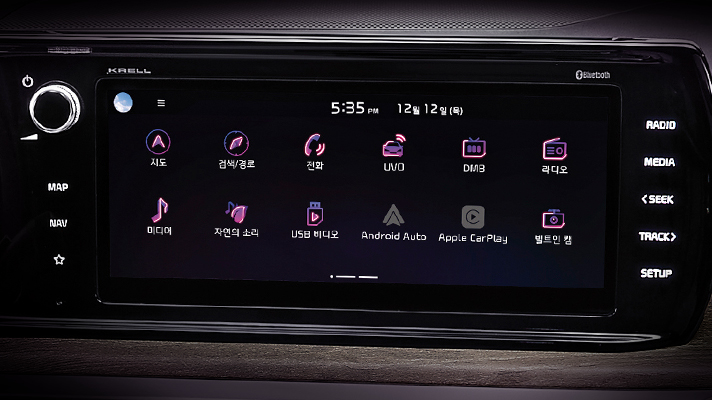
Infotainment systems, as their name suggests, provide information and entertainment to drivers. In a world where cars are evolving beyond just a means of transport, the importance of the system is increasingly coming into manufacturers’ focus. Leading this evolution is the K5, whose redesigned GUI (Graphic User Interface) and interactive technology on the infotainment system epitomize the identity of a modern connected car.

The new infotainment system brings the full intensity and dynamism of neon color, juxtaposing calm and subtle marine blue and vigorous and vivacious magenta. The resulting GUI is, for the lack of a better word, fresh―delivering subtlety in its color scheme and intuitiveness in its interface.
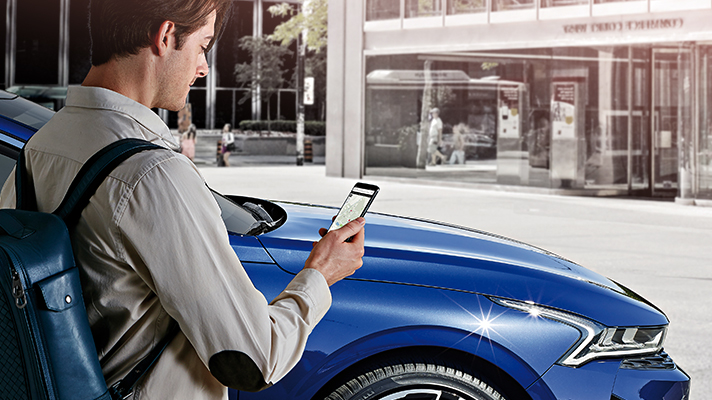
Often, getting to the final destination as guided by the navigation is impossible. For example, if there is no parking space available at the destination, the driver must find a remote parking space and walk back to the destination. K5’s new infotainment system has a function that can help the drivers in just such a plight. Associating the infotainment system with the smartphone’s GPS information, the function activates if the car turns off within 2 kilometers of the destination without arriving there. The function then sends the destination information to the smartphone’s UVO app, which creates a push alarm there, enabling the driver to walk to the final destination with the guidance of the UVO app’s augmented reality screen. On the whole, the function saves the hassle of having to look up the final destination on the phone after parking the car.
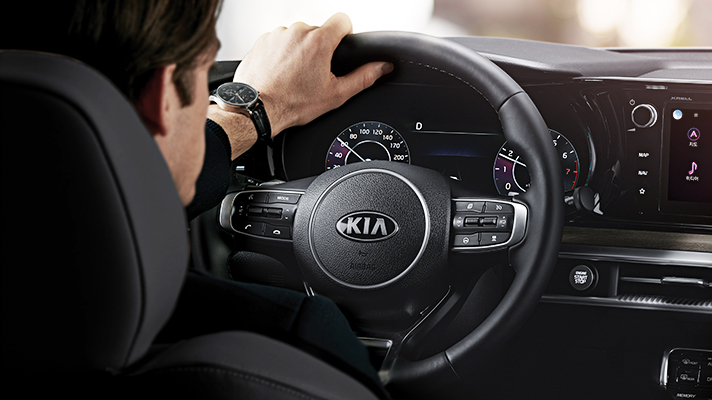
Thanks to the collaboration with Kakao Corporation, Kia Motors could drastically improve the utility of its infotainment system by installing Kakao-i, a natural language processing (NLP) voice recognition system. Using everyday natural language, the drivers can now conveniently look up a wide range of information, from daily info and real-time news to stock exchange information and even trivia. Once a vocal order is given, Kakao-i responds in natural language as well. Its NLP voice recognition is advanced enough to feel as if conversing with a real person.
The real convenience of Kakao-i, though, is its ability to control the car’s various functions. It can, as would be expected, control the navigation system. But it can also open and shut the car’s windows, control the AC, and activate the steering wheel heating wire, etc., following the driver’s vocal order. The technology is convenient and, more importantly, improves safety. Even simple maneuvers like opening the windows or turning on the AC while driving dangerously diverts the driver’s attention from the road; the ability to make vocal orders can drastically reduce the likelihood of accidents.

Suppose you feel stuffy while driving and want to open the windows. But you wouldn’t have to turn your head or move your left arm to find the window buttons. You can instead push the voice recognition button on the wheel and say, “open all windows.” Kakao-i would then open the windows for you. The software is capable of understanding various dialects as well. But if faced with incomprehensible or impossible commands, the system would smoothly respond, “that’s not within my ability,” or “I cannot do that function yet.” Again, making orders to the system feels as natural as a conversation with a real person.
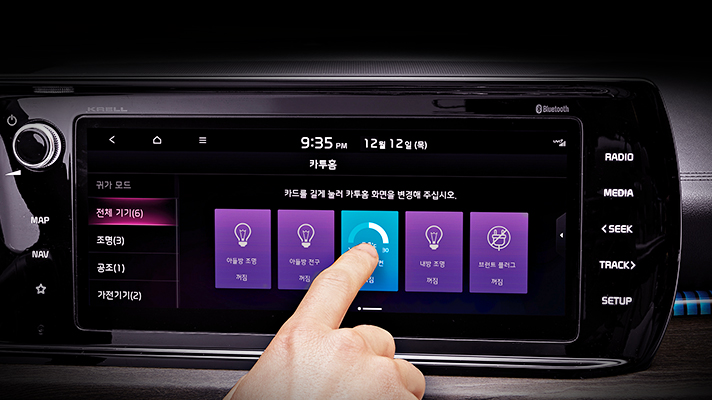
Car-to-Home function on the infotainment system allows the driver to check and control the IoT devices in his or her home. It allows the convenient control of home lighting, thermostat, gas valve, and doorlock from inside the car. Suppose one is in a morning rush and cannot remember whether the gas valve was locked on the way out―the car’s infotainment system can come to the rescue to check the valve’s status and lock it if it is currently unlocked.
Location Share function, as the name suggests, shares the location of the car with the designated smartphone devices if the car is traveling to a favorite destination set in the navigation. For example, suppose you are driving home, a favorite destination in your navigation. Once you set it as the destination, your real-time location is sent to your family’s smartphones (if their numbers are designated in the infotainment device) to clearly inform them of your expected arrival time. The function would be useful when picking up children in school as well: the children would know exactly when the parents’ car would arrive and not have to wait indefinitely at the door.
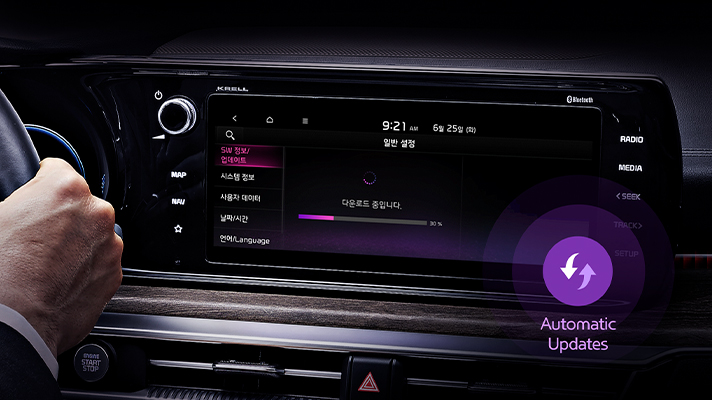
The drivers’ biggest hassle in using the infotainment system has always been making cumbersome updates. Every time the system’s software or map info needs updating, the driver had to visit the official service center or download the software update on a USB or SD card, plug it into the car, and install it himself.
The 3rd-gen K5 comes with the OTA function that eliminates such a hassle. If a new update is detected, the new infotainment system uses the OTA technology to automatically download the software. The only thing the driver needs to do is authorize the installation with the touch of a button. After the update is complete, the list of changes and various other info are reviewable through a displayed QR code.
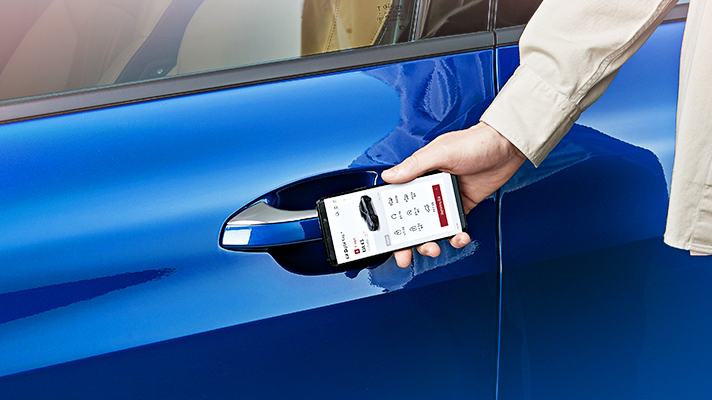
The new K5 comes with Kia’s first application of a ‘digital key.’ Using a smartphone app, the driver can lock and unlock the car doors and even turn on the engine, eliminating the need to bring along the physical Smartkey.
The interface is simple. One would need to download and install the application on one’s smartphone and register it in the car’s infotainment system. When a smartphone comes near the outdoor handle grip, NFC (Near Field Communication) function detects the car owner’s entry and unlocks the vehicle door. That is not all. Once in the car, the driver can place the phone on the wireless charging pad in the center console to turn on the engine.
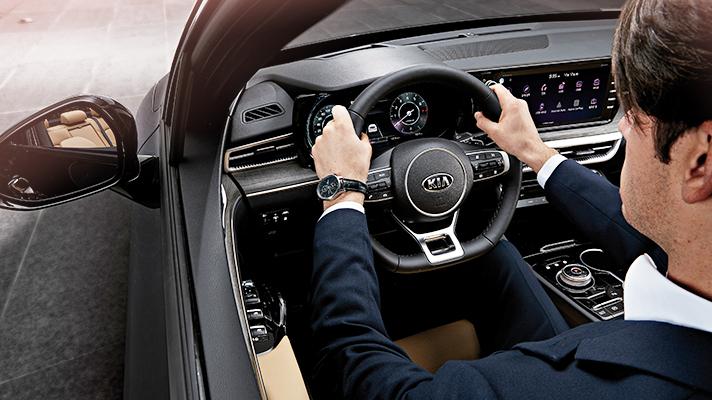
The digital key is not a mere replacement for the Smartkey, however. In one innovative usage, it allows a maximum of four people (including the owner) to share the vehicle. The owner of the vehicle can register the share drivers, setting for each the duration of the share and the degree of authority over the vehicle functions. Flexible enough to accommodate many vehicle share arrangements, the function is expected to become more useful in the future when vehicle share becomes a more commonplace practice.
Each user can save a personalized profile onto the digital key application. The locations of the seat and the steering wheel, as well as the angles of the side mirrors and the HUD (head-up display), can be saved in the profile. When a registered user enters the car through the digital key, the car’s setting would be set to follow the driver’s saved setting, eliminating the hassle of having to move the seat around every time the driver changes. The application also remembers each driver’s preferred radio channel and even the vehicle information to be displayed on the dashboard. Indeed, this one digital key application is the key to achieving complete customization.
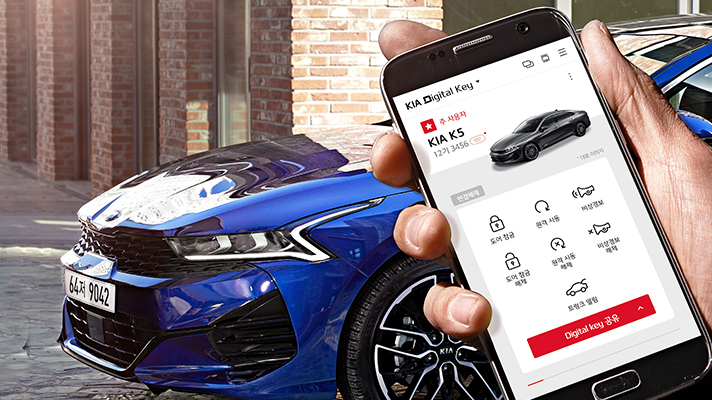
Using the digital key application to review the car information (within the Bluetooth signal range) is also possible. Using BLE (Bluetooth Low Energy), the technology enables the drivers within a 10-meter range to review such key information as mileage, fuel efficiency, fuel gauge, and tire air pressure, making car maintenance easier by a mile. Thanks to the low-energy nature of the technology, the energy consumption on the smartphone due to Bluetooth activation is minimal as well.
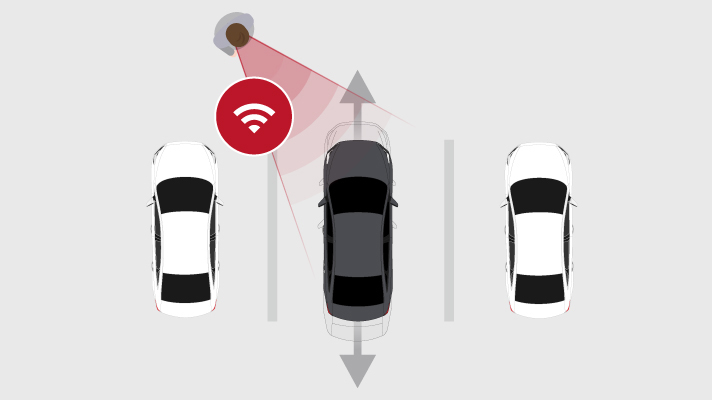
The physical Smartkey has evolved to embody new technology as well. RSPA (Remote Smart Parking Assist) function is one such example of the new tech applied to the Smartkey. The function is simple to use and useful in complicated parking conditions: using the key, the driver can turn on the engine from the outside of the car and use the forward/backward buttons to move the car as desired.
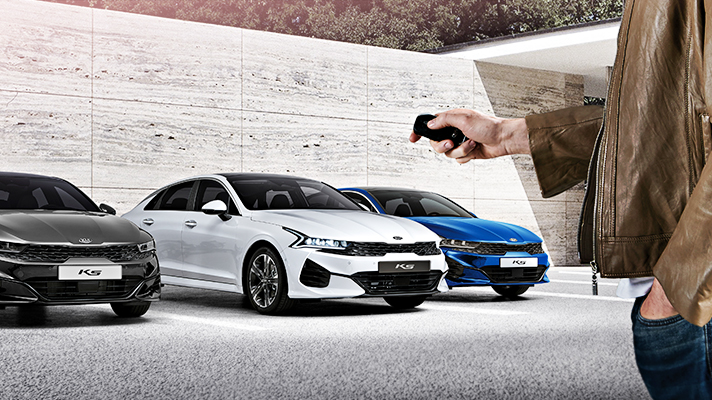
Suppose you are trying to leave a parking lot and find a car by the side parked so tightly that entering the vehicle from there is impossible. RSPA comes in very handy in this situation. Again using the Smartkey, the driver can turn on the engine, move the vehicle forward, and enter through the front door without worrying about scratching the car on the side. Or suppose you have finished shopping and find that there is no space behind the parked car to load the trunk. Again using RSPA, you can move the vehicle forward to acquire that space.
RSPA is associated with the car’s ADAS system to prevent accidents. When RSPA is activated, the front tires automatically align straight to prevent side movements. Even as the vehicle follows the forward/backward orders from the Smartkey, if the car comes within crashing distance of a nearby obstacle, the emergency brake is applied to prevent contact.
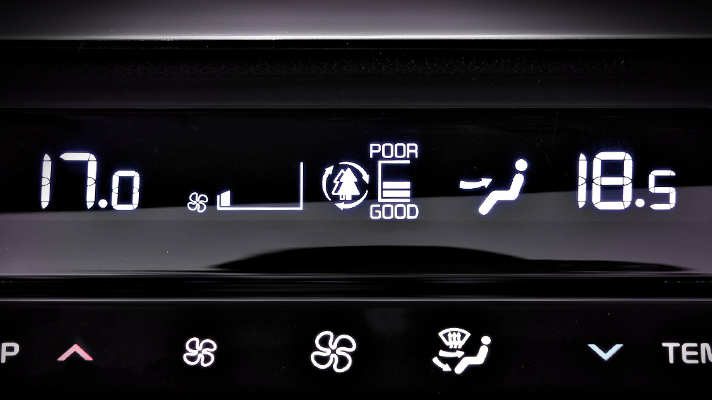
The 2nd-gen K5 had installed Kia’s then-first air cleaning system to combat interior air pollution. The system forcefully cycles the air inside and uses the high-efficiency particle filter to winnow the harmful fine dust. It is capable of filtering particulates as small as 1/30th of the human hair diameter as well as various harmful acidic and basic gases, contributing to the maintenance of more comfortable interior air.
This capable system has gone through further evolutions in the 3rd-gen K5’s Intelligent Air Conditioning System. Again the very first application of its type in Kia models, the new AC system uses high-precision laser sensors to detect the interior air quality, and if the fine dust concentration measures above a certain level, it runs the air cleaning function to purify the air. Fine dust concentration is displayed at four levels in the AC display, allowing the drivers to see the real-time quality of the interior air.
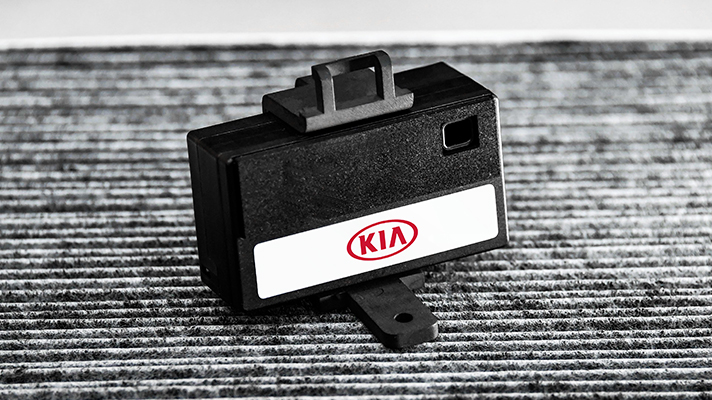
It’s not just the sensors that evolved―filtering capability, the crux of the technology, also underwent significant improvements. The new 2nd-gen high-performance combi filter, newly applied to the 3rd-gen K5, boasts the maximum dust collection efficiency of 99%. Compared to the high-efficiency particle filter on the 2nd-gen K5 (with the dust collection efficiency of 88-93%), the new filter is significantly more capable in banishing fine and ultrafine dust from the vehicle.
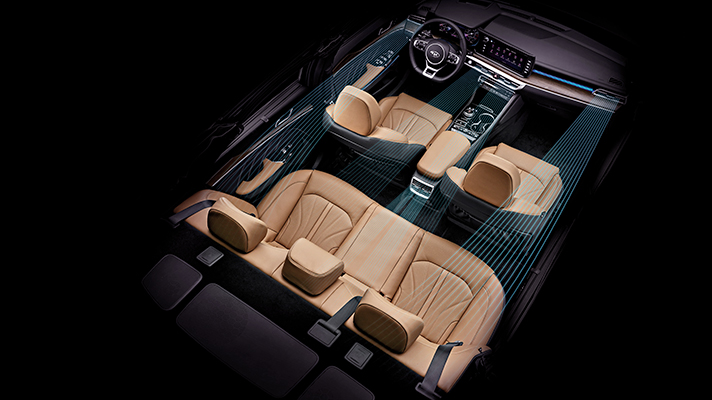
The newly added Auto Blower adds to the convenience of the AC system. Generally, full auto AC mode operates in accordance with the temperature and power designated by the driver. But when the current car temperature is too far off from the driver’s settings, the auto mode often overrides the driver’s preferred AC power and becomes too strong, causing discomfort to the driver. If the driver adjusted the power again, though, the auto mode would turn off, rendering the function useless. Auto Blower allows the drivers to set the auto mode at three different power levels, allowing for personalization while taking advantage of the convenience of the auto mode.
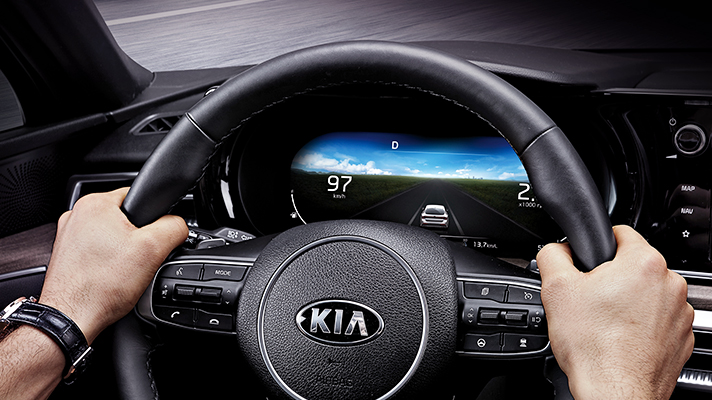
The cluster has traditionally had one function only: delivering information. But recently, it has increasingly evolved design-wise to serve a visual function as well. The new 12.3-inch full-color digital cluster on the 3rd-gen K5 similarly satisfies the drivers’ visual needs.
The themed cluster, applied to a Kia model for the first time, is associated with the infotainment system and responds to various driving conditions by changing the background graphics. The graphics are a mode of interaction technology, responding to the surrounding changes in weather and time. They are attractive enough to captivate not only car lovers but also early adapters.
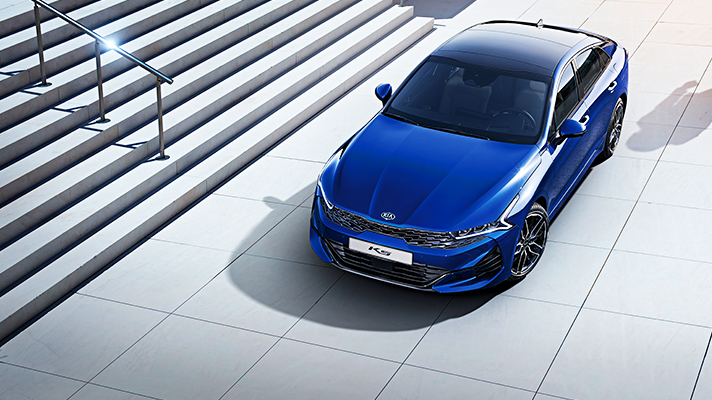
Thanks to its various smart and interactive technology, the 3rd-gen K5 allows its drivers to focus on driving and its passengers to enjoy the drive in maximal comfort. Built to satisfy above all the very purpose of a car―a comfortable ride to the destination―the K5 is spearheading the industry’s movement to define the identity of ‘smart mobility.’